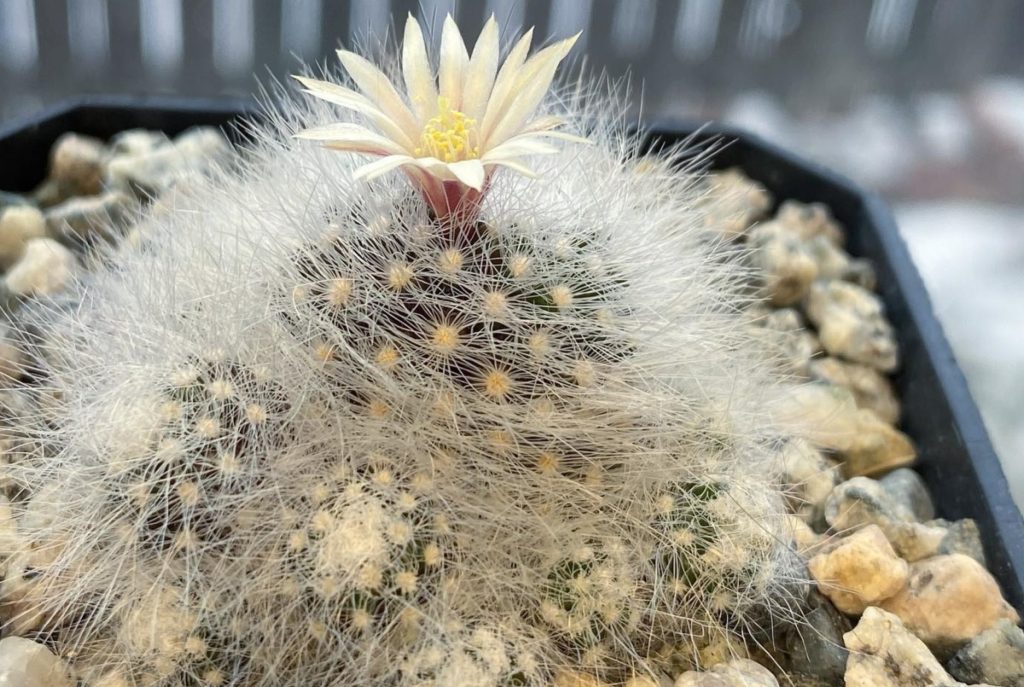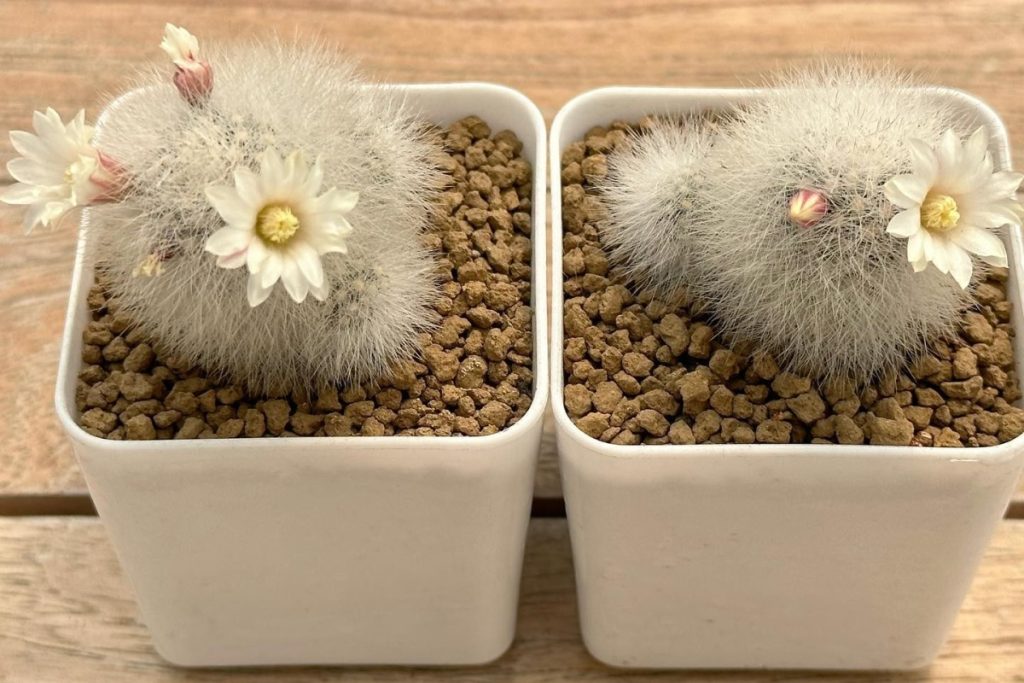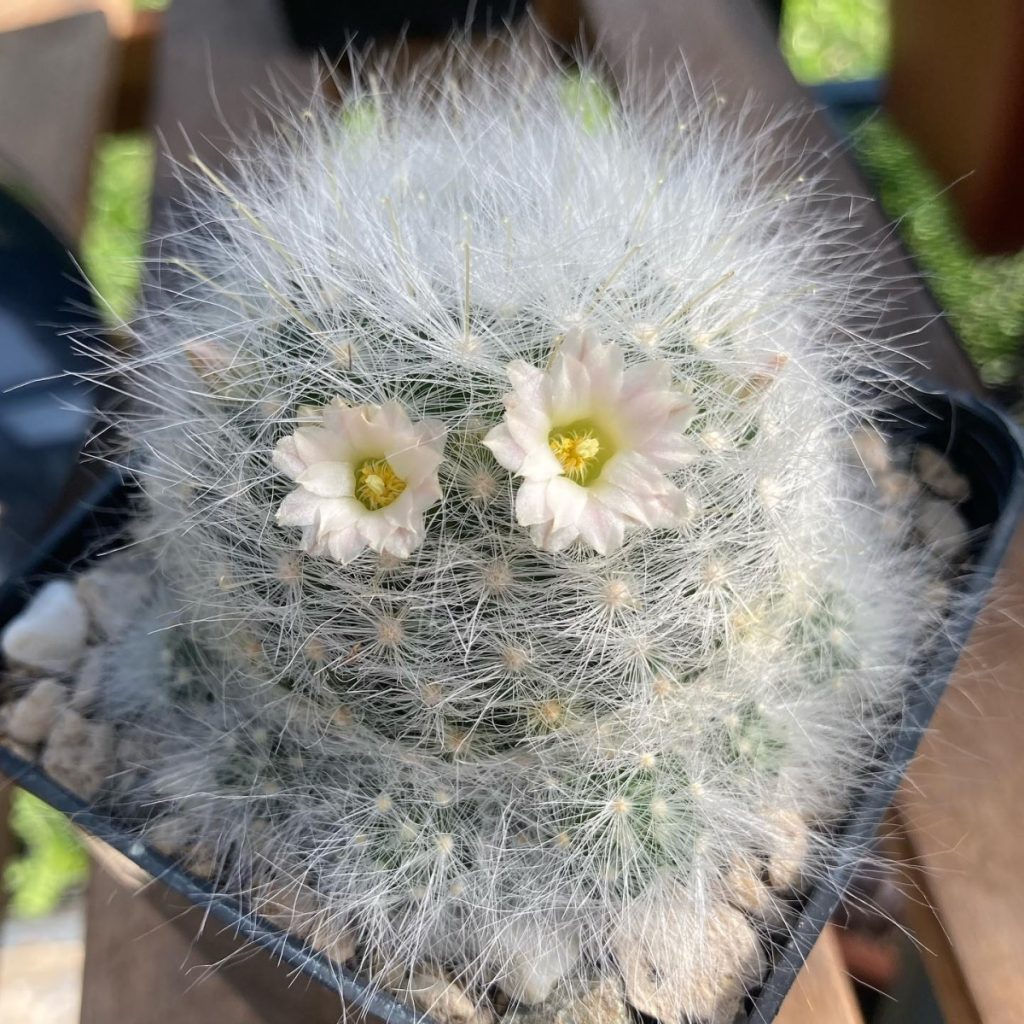Mammillaria schwarzii: Nature’s Own Glittering Masterpiece
Mammillaria schwarzii is a remarkable cactus species that demands attention. This extraordinary plant is covered in delicate, glassy white spines that create a striking visual display. Its compact form clusters densely from an early age, forming charming clumps around the size of a man’s fist, but rarely growing much larger. Adding to its allure, these clusters bear an abundance of vibrant red fruits that provide a beautiful contrast against the whitish spination. Let’s explore the unique features and care requirements of this captivating cactus.

Contents
About Mammillaria schwarzii
Mammillaria schwarzii boasts a distinct appearance that sets it apart. Its stems are globe-shaped, reaching up to around 3 cm (1 inch) in height and 4 cm (1.5 inches) in diameter, without any latex present. The cylindrical tubercles sport up to 12 thin, white bristles, each measuring about 5 mm (0.2 inches) long.
A striking feature is the brilliant array of 35-40 hairlike, shiny white radial spines adorning the plant. Rising among them are 8-9 central spines of a similar appearance to the radials but slightly longer at 5-6 mm (0.2-0.24 inches). Interestingly, some cultivated specimens exhibit occasional hooked central spines with a reddish tinge at the tips, resembling a delicate artist’s brushstroke and adding to the plant’s charm.
The flowers of Mammillaria schwarzii are predominantly white, with red or pink midstripes along the petals, reaching up to 5 mm (0.2 inches) in length. After blooming, this remarkable cactus continues to captivate with masses of bright red fruits that contrast beautifully against the whitish spination.
Related Post:
39 Mammillaria Cactus Types and Care [With Pictures]
How to Care for Mammillaria schwarzii
Light
Mammillaria schwarzii loves intense light, so it will thrive in direct sunlight outdoors. If growing indoors, place it near a bright window or use grow lights to ensure it receives sufficient light exposure. Gradually increase the light intensity to prevent damage, and be prepared to see the plant’s spination become even denser and more stunning in high-light conditions.

Water
These cacti require careful watering, as they are sensitive to rot. During the growing season, water only when the soil has completely dried out from the previous watering. Avoid overhead watering, as the spines can trap moisture, leading to potential problems. In winter, when the plant is dormant, reduce watering significantly or stop altogether.
Soil Mix
Mammillaria schwarzii thrives in a well-draining soil mix that allows its roots to breathe. A combination of sand, perlite, and organic compost or fertilizers will provide the perfect growing medium. You can either create your own custom blend or purchase a high-quality cactus soil mix from your local garden center.
Fertilizer
Regular fertilization is essential for healthy growth and vibrant spination. Use a well-balanced, water-soluble cactus fertilizer, rich in phosphorus but with moderate nitrogen levels. Fertilize during the growing season and reduce or stop fertilizing in winter when the plant is dormant.
Temperature and Humidity
This cactus prefers warm temperatures ranging from 70°F to 80°F (21°C to 27°C) during the growing season. In winter, it can tolerate slightly cooler temperatures but should be protected from extreme cold. Maintain average household humidity levels, as this plant does not require specialized humidity conditions.

Pests and Problems
Mammillaria schwarzii is generally resistant to pests and diseases when provided with proper care. However, it’s essential to watch out for common cactus pests like mealybugs or scale insects. Treat any infestations promptly with suitable insecticidal soap or neem oil. Overwatering or poor drainage can lead to root rot, so ensure the soil dries out between waterings.
Pruning
Pruning is typically not necessary for Mammillaria schwarzii, as it naturally forms a dense, compact cluster. However, if you notice any damaged or discolored spines or stems, you can carefully remove them with clean, sharp scissors or pruners.
Potting and Repotting
Mammillaria schwarzii prefers to be somewhat pot-bound, so repotting should only be done every three to four years when the plant has outgrown its current container. Use a well-draining cactus potting mix and a pot with ample drainage holes. Gently remove the plant from its old pot, taking care not to damage the delicate spines, and replant in the new container, ensuring the soil level remains the same.
Mammillaria schwarzii Propagation
Mammillaria schwarzii can be propagated through offsets or seed sowing. Offsets, also known as pups, are small plantlets that develop around the base of the parent plant, making it an easy and reliable propagation method.
- Offsets:
- Carefully separate the offsets from the parent plant, ensuring you have a healthy root system attached.
- Allow the offsets to callus over for a few days before planting.
- Prepare a well-draining cactus potting mix and plant the offsets at the same depth as they were previously growing.
- Water sparingly until roots have established, then follow the regular watering schedule.
- Seed Sowing:
- Sow seeds after the last frost in spring or early summer.
- Use a well-draining seed-starting mix and lightly cover the seeds.
- Keep the soil moist but not waterlogged during germination.
- Provide bright, indirect light and warm temperatures around 70°F to 80°F (21°C to 27°C).
- Once seedlings emerge, gradually introduce them to higher light levels and begin watering sparingly.
With patience and proper care, you’ll soon have a stunning collection of Mammillaria schwarzii, each one a glittering masterpiece in its own right.
